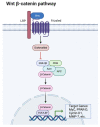Fat Deposition and Fat Effects on Meat Quality-A Review
- PMID: 35739885
- PMCID: PMC9219498
- DOI: 10.3390/ani12121550
Fat Deposition and Fat Effects on Meat Quality-A Review
Abstract
Growth is frequently described as weight gain over time. Researchers have used this information in equations to predict carcass composition and estimate fat deposition. Diet, species, breed, and gender all influence fat deposition. Alterations in diets result in changes in fat deposition as well as the fatty acid profile of meat. Additionally, the amount and composition of the fat can affect lipid stability and flavor development upon cooking. Fat functions not only as a storage of energy and contributor of flavor compounds, but also participates in signaling that affects many aspects of the physiological functions of the animal. Transcription factors that are upregulated in response to excess energy to be stored are an important avenue of research to improve the understanding of fat deposition and thus, the efficiency of production. Additionally, further study of the inflammation associated with increased fat depots may lead to a better understanding of finishing animals, production efficiency, and overall health.
Keywords: breed; carcass yield; fat deposition; fat transcripts; inflammation.
Conflict of interest statement
The authors declare no conflict of interest.
Figures



Similar articles
-
Alternating dietary fat sources for growing-finishing pigs fed dried distillers grains with solubles: I. Growth performance, pork carcass characteristics, and fatty acid composition of subcutaneous fat depots.J Anim Sci. 2013 Mar;91(3):1493-508. doi: 10.2527/jas.2012-5528. Epub 2013 Jan 7. J Anim Sci. 2013. PMID: 23296820
-
Contrasting cellularity and fatty acid composition in fat depots from Alentejana and Barrosã bovine breeds fed high and low forage diets.Int J Biol Sci. 2012;8(2):214-27. doi: 10.7150/ijbs.8.214. Epub 2012 Jan 1. Int J Biol Sci. 2012. PMID: 22253565 Free PMC article.
-
Effects of forage species or concentrate finishing on animal performance, carcass and meat quality.J Anim Sci. 2013 Mar;91(3):1454-67. doi: 10.2527/jas.2012-5914. Epub 2013 Jan 23. J Anim Sci. 2013. PMID: 23345568
-
Effects of dietary energy content and source using by-products on carcass and meat quality traits of cull ewes.Animal. 2021 Jan;15(1):100035. doi: 10.1016/j.animal.2020.100035. Epub 2020 Dec 10. Animal. 2021. PMID: 33516030
-
The effects of diet, slaughter weight and docking on growth, carcass composition and meat quality of fat-tailed Barbarine lambs. A review.Trop Anim Health Prod. 2011 Oct;43(7):1371-8. doi: 10.1007/s11250-011-9865-6. Epub 2011 Apr 21. Trop Anim Health Prod. 2011. PMID: 21509453 Review.
Cited by
-
PDZK1-Interacting Protein 1(PDZKIP1) Inhibits Goat Subcutaneous Preadipocyte Differentiation through Promoting Autophagy.Animals (Basel). 2023 Mar 14;13(6):1046. doi: 10.3390/ani13061046. Animals (Basel). 2023. PMID: 36978587 Free PMC article.
-
Temporal Transcriptome Dynamics of Longissimus dorsi Reveals the Mechanism of the Differences in Muscle Development and IMF Deposition between Fuqing Goats and Nubian Goats.Animals (Basel). 2024 Jun 12;14(12):1770. doi: 10.3390/ani14121770. Animals (Basel). 2024. PMID: 38929389 Free PMC article.
-
Effect of particle size of zeolite clay included in high-energy diets for feedlot lambs: Growth performance, dietary energy, carcass traits, and visceral mass.J Adv Vet Anim Res. 2023 Sep 30;10(3):500-506. doi: 10.5455/javar.2023.j703. eCollection 2023 Sep. J Adv Vet Anim Res. 2023. PMID: 37969806 Free PMC article.
-
Effect of changing the proportion of C16:0 and cis-9 C18:1 in fat supplements on rumen fermentation, glucose and lipid metabolism, antioxidation capacity, and visceral fatty acid profile in finishing Angus bulls.Anim Nutr. 2024 May 3;18:39-48. doi: 10.1016/j.aninu.2024.04.010. eCollection 2024 Sep. Anim Nutr. 2024. PMID: 39026601 Free PMC article.
-
Polyphenols-Enrichment of Vienna Sausages Using Microcapsules Containing Acidic Aqueous Extract of Boletus edulis Mushrooms.Foods. 2024 Mar 22;13(7):979. doi: 10.3390/foods13070979. Foods. 2024. PMID: 38611285 Free PMC article.
References
-
- Berg R.T., Butterfield R.M. Growth Patterns of Bovine Muscle, Fat and Bone. J. Anim. Sci. 1968;27:611–619. doi: 10.2527/jas1968.273611x. - DOI
-
- Robelin J. Growth of adipose tissues in cattle; partitioning between depots, chemical composition and cellularity. A review. Livest. Prod. Sci. 1986;14:349–364. doi: 10.1016/0301-6226(86)90014-X. - DOI
-
- Trenkle A., Marple D.N. Growth and development of meat animals. J. Anim. Sci. 1983;57:273–283. - PubMed
Publication types
Grants and funding
LinkOut - more resources
Full Text Sources

